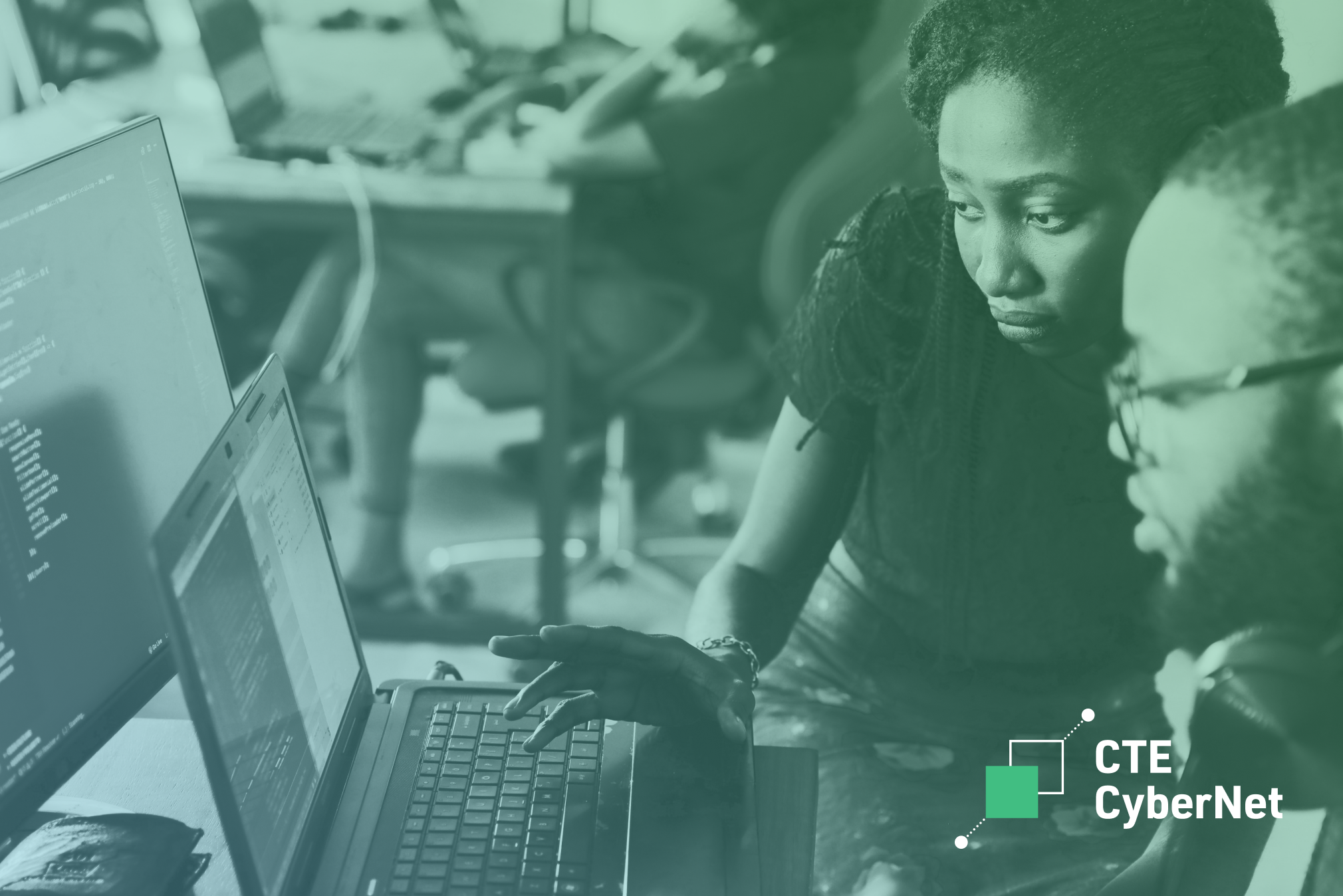CTE CyberNet explored new ways to help teachers develop technical skills.
Cybersecurity work is vital to our nation’s security and prosperity, yet hundreds of thousands of in-demand, high-paying cybersecurity jobs remain unfilled: Over the past year, American employers have posted nearly half a million cybersecurity job openings.
Addressing the cyber talent gap will require identifying and developing pathways from secondary education to postsecondary education and careers. However, many U.S. high schools do not have enough educators with the necessary expertise to provide a rigorous cybersecurity education. Increasing the number of career and technical education (CTE) teachers who can effectively prepare students would help the nation develop a stronger cyber ecosystem and address a national security imperative.
A professional development initiative to strengthen cybersecurity education
The U.S. Department of Education collaborated with other federal agencies on CTE CyberNet, a national cybersecurity teacher professional development initiative. Through this program, designed and supported by Luminary Labs, local academies provided teachers with strategies and tools to deliver more rigorous, standards-aligned CTE cybersecurity programs of study.
Based on recommendations from cybersecurity subject matter experts, the Department identified three NSA-designated Centers of Academic Excellence — leaders in cybersecurity education and regional engagement — to host academies during summer 2020 and the 2020-2021 academic year. The local academies designed their own curricula and selected a cohort of CTE CyberNet teachers to attend a summer intensive session, which included approximately 80 hours of professional development. The cohort continued their professional development in an accelerator throughout the academic year; these accelerators provided additional resources and technical assistance to support teachers as they implemented learnings and practices in the classroom. Over the past year, participants also had an opportunity to connect with teachers from other local academies as part of the CTE CyberNet teacher network.
This month, the academies concluded with a virtual ceremony recognizing participating teachers and the leaders of each local academy.
Elevating the role of the educator with teacher-centered design
CTE CyberNet sought to complement existing cybersecurity education initiatives by centering teachers’ needs and sustaining support, encouragement, and recognition beyond a single short-term experience.
The summer intensive session was designed to increase technical knowledge and help teachers develop teaching and learning practices appropriate for their respective classrooms. Participants received a stipend and continued support through an academic-year accelerator. During this period, local academies made experts and resources available for teachers, helping them implement new activities and bring industry professionals into classrooms.
Professional development that doesn’t require travel is more accessible for all teachers, and offering local and virtual options for both the summer intensive session and accelerator made it easy for participants to attend. In each region, teachers’ needs are different, and local leaders tailored academies to meet those needs.
A localized approach to ongoing support
Each local professional development academy’s offering was unique — a reflection of each state’s distinct approach to CTE, as well as regional job markets, working environments, and demographics. Academies engaged with private-sector partners such as Amazon Web Services, Kali Linux, Mastercard, and Northrop Grumman to help design and deliver their academies. While each academy was distinct, local leaders collaborated with each other, sharing resources and ideas, then adapting them for their own locations.
The localized approach also made academies more flexible and resilient, quickly shifting methods of delivery to offer their summer intensive sessions online during the coronavirus pandemic. Most support during the academic year was also delivered remotely, and implementing virtual tools helped teachers prepare students for a range of work environments — including in-person, hybrid, and remote.
Expanding access and equity with career and technical education
Initiatives like CTE CyberNet don’t only expand access for teachers — they also bring opportunities to students. CTE is open to all learners; students who might not otherwise have been on a pathway to this high-demand occupation may now be able to enter the workforce or go on to study cybersecurity in college. Some academies helped establish or strengthen dual-credit programs so high school students can get a head start on postsecondary education, further lowering barriers to high-demand, technology-driven careers. And these tighter connections between high schools, community colleges, universities, and private-sector employers help to make regional and national cybersecurity ecosystems even stronger.
Everyone learns differently, and the breadth of resources provided by academies helped CTE teachers bring hands-on, virtual education to a wide range of students. From cryptography scavenger hunts and classroom intranets to VR escape rooms and interactive online labs — new tools helped teachers provide students with an engaging introduction to real-world cyber concepts. Some teachers went beyond cyber classes to apply these tools and resources to other computer science labs, business courses, and STEM topics.
To find out about more competitions, accelerators, events, and other opportunities from Luminary Labs and our extended network, sign up to receive open innovation alerts.

